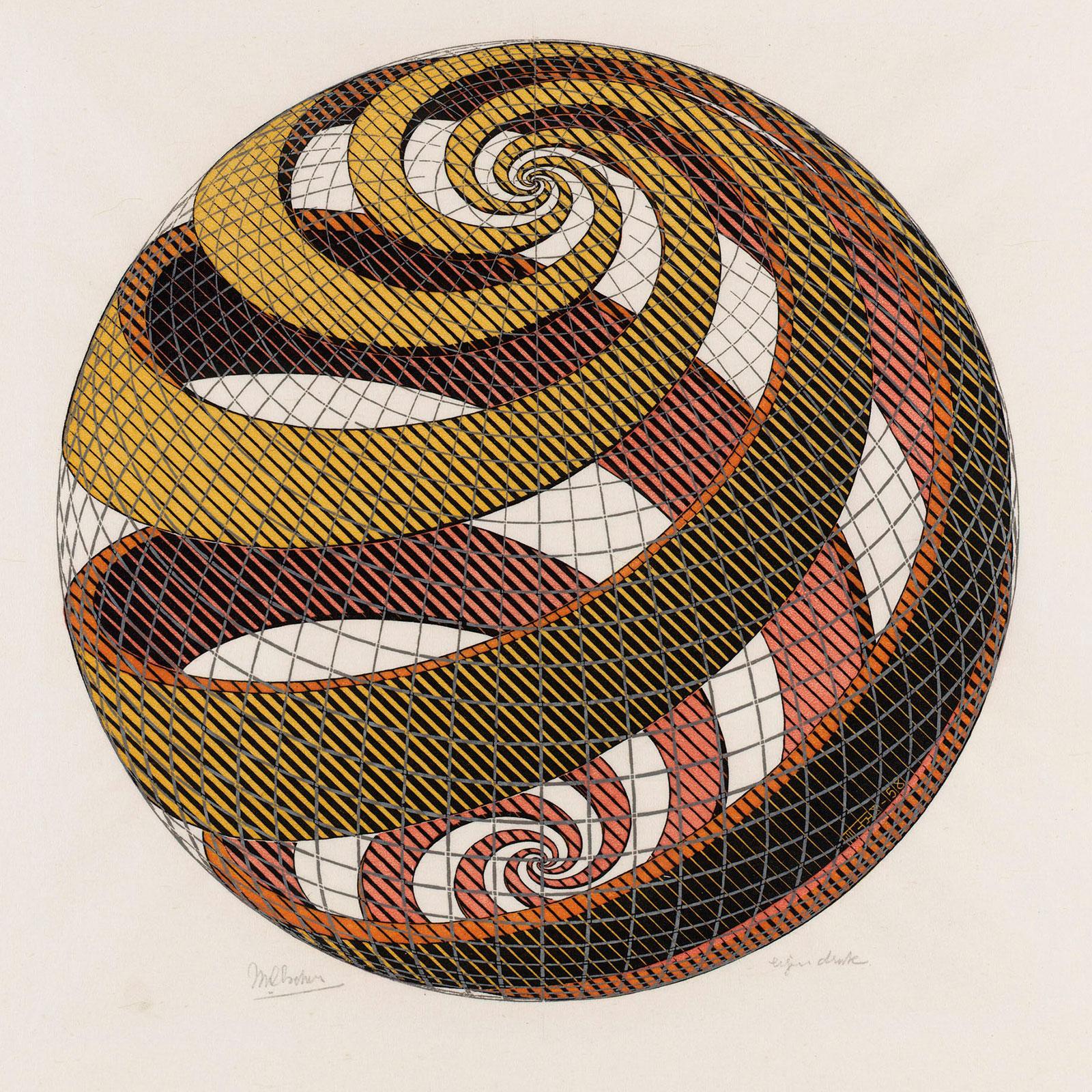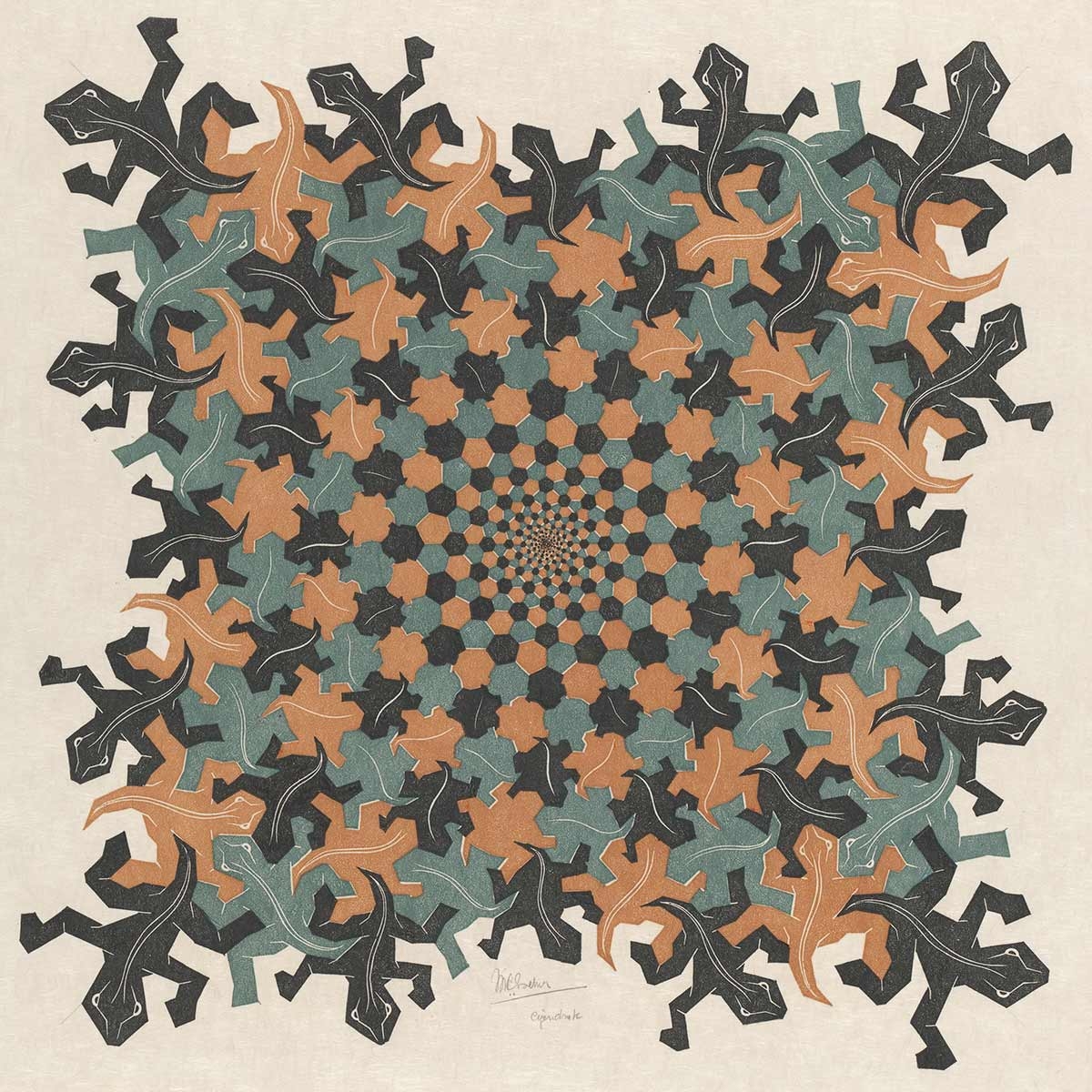
Although Escher was fascinated by the regular division of the plane all his life, he always used his research into this phenomenon as a tool. He never created a tessellation as a stand-alone print. He came closest with the prints in his book The Regular Division of the Plane from 1958. For him, the many drawings featuring tessellations that he created were primarily a starting point for other work. This is clearly visible in his metamorphoses and cycles. Often these concepts coexist in the same print. Consider in this regard early works such as Cycle (1938), Day and Night (1938), Metamorphosis II (1939-1940), Reptiles (1943) and Encounter (1944). These prints feature a regular division of the plane, a metamorphosis and a cycle all at once. They are each part of the story he wants to tell. A story that is 'finished' because it forms a cycle. But there are also prints in which he tries to capture infinity without resorting to narrative, i.e. by means of a regular division of the plane and sometimes a metamorphosis, but without a cycle. In those prints he suggests that the image can go on indefinitely, even though the edges of the paper prevent continuation. An early example of this is Development II, from February 1939.
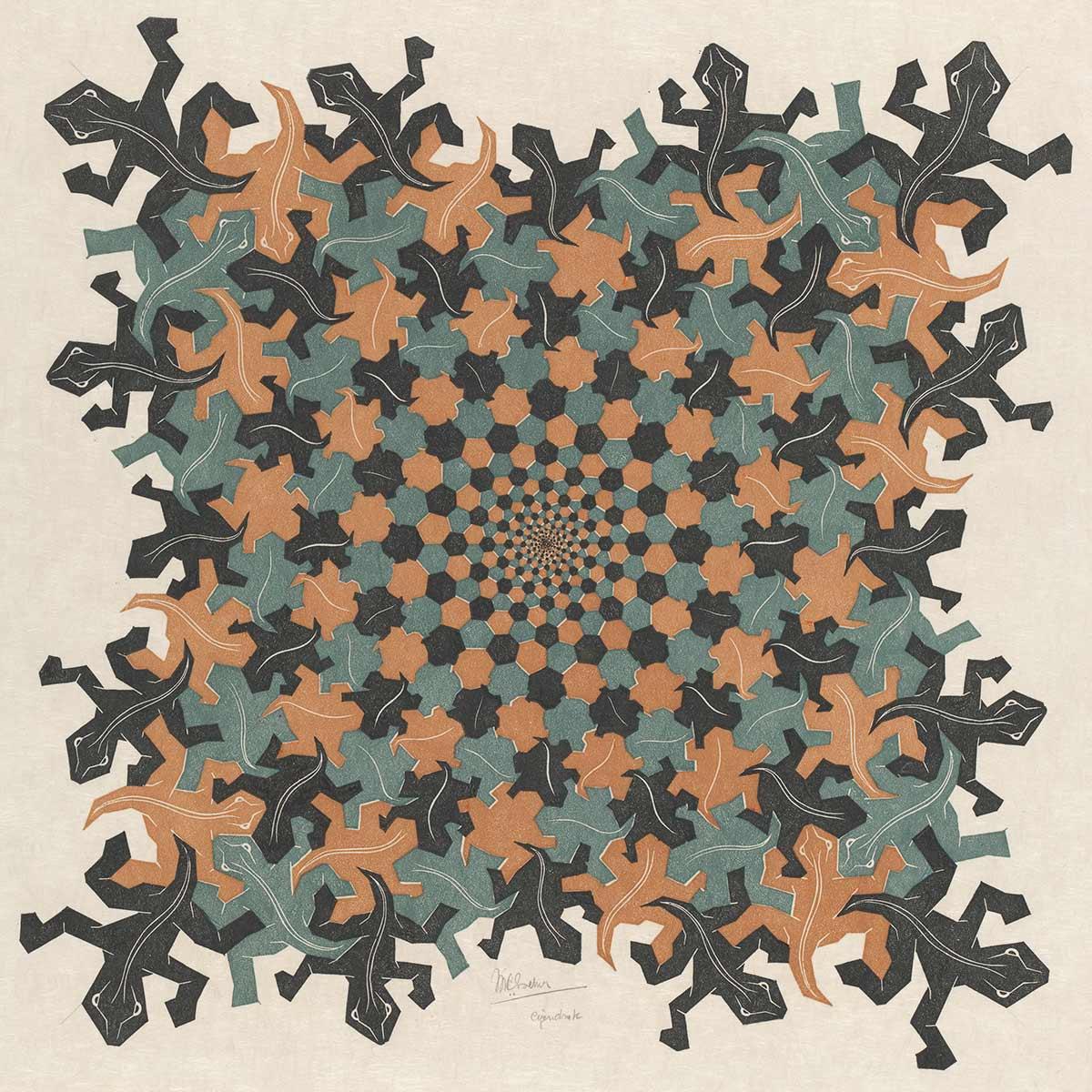
If you follow this woodcut from the edge to the centre, the reptiles gradually change from their real shape into a geometric shape, shrinking as this metamorphosis unfolds. In the centre they are infinitely small, having dwindled out of existence. The other way around, geometric shapes gradually change into reptiles the closer they get to the edge. This was a transition he reused in Metamorphosis II later that year. At the edge of Development II, the reptiles are full-grown and could walk off the paper. However, whereas they are part of a story in Metamorphosis II, their maturity is a terminus here. What's the next step? Metamorphosis is in fact the wrong tool with which to reach infinity. Escher had already produced Development I in 1937 and after these two prints he realised that he could not find a satisfactory way to suggest infinity on paper using the combination of metamorphosis and the regular division of the plane.
Incidentally, he did explore this infinity in three-dimensional form during this period. First in the form of a cylinder. On this he wrote*:
'What we can do is this: bend the piece of paper on which this reptile world is fragmentarily depicted, turn it into a paper tube such that the animal figures on the cylindrical surface continue to complement each other while the tube revolves around its longitudinal axis. Endlessness in one direction has thus been achieved, but not yet in all directions, because we cannot produce an infinitely long tube as well as an infinitely expanded plane.'
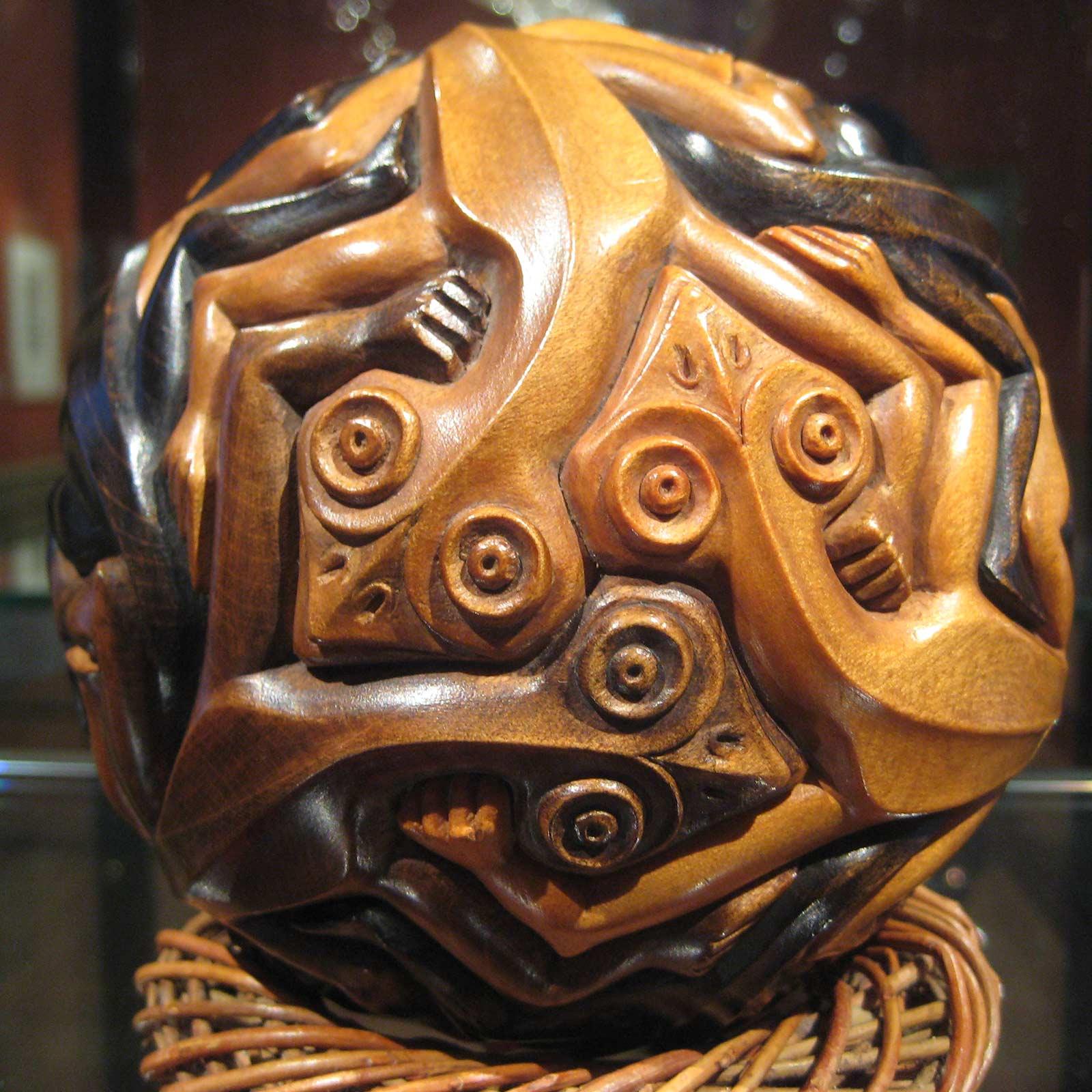
In the end, this shape was not suitable either, but there was one shape that was: a sphere. Eventually, he did manage to reach infinity by carving a number of tessellations from a beechwood sphere. He wrote about his first one from 1940, which takes fish as its subject**:
'A wooden ball, the surface of which is completely filled by twelve congruent fish shapes. Anyone turning the ball around in his hands will see fish after fish appear, ad infinitum.
But is this spherical result, however pure in conception, really completely satisfactory? No, and certainly not for a graphic artist, who, more than a draftsman, painter or sculptor, knows himself to be connected to the flat surface with hands and feet. And apart from that, can we really break free from the idea that a quantity of twelve is anything but an infinitely large number? Be that as it may, there are other options in terms of representing the infinite number visually, without curving the plane.'
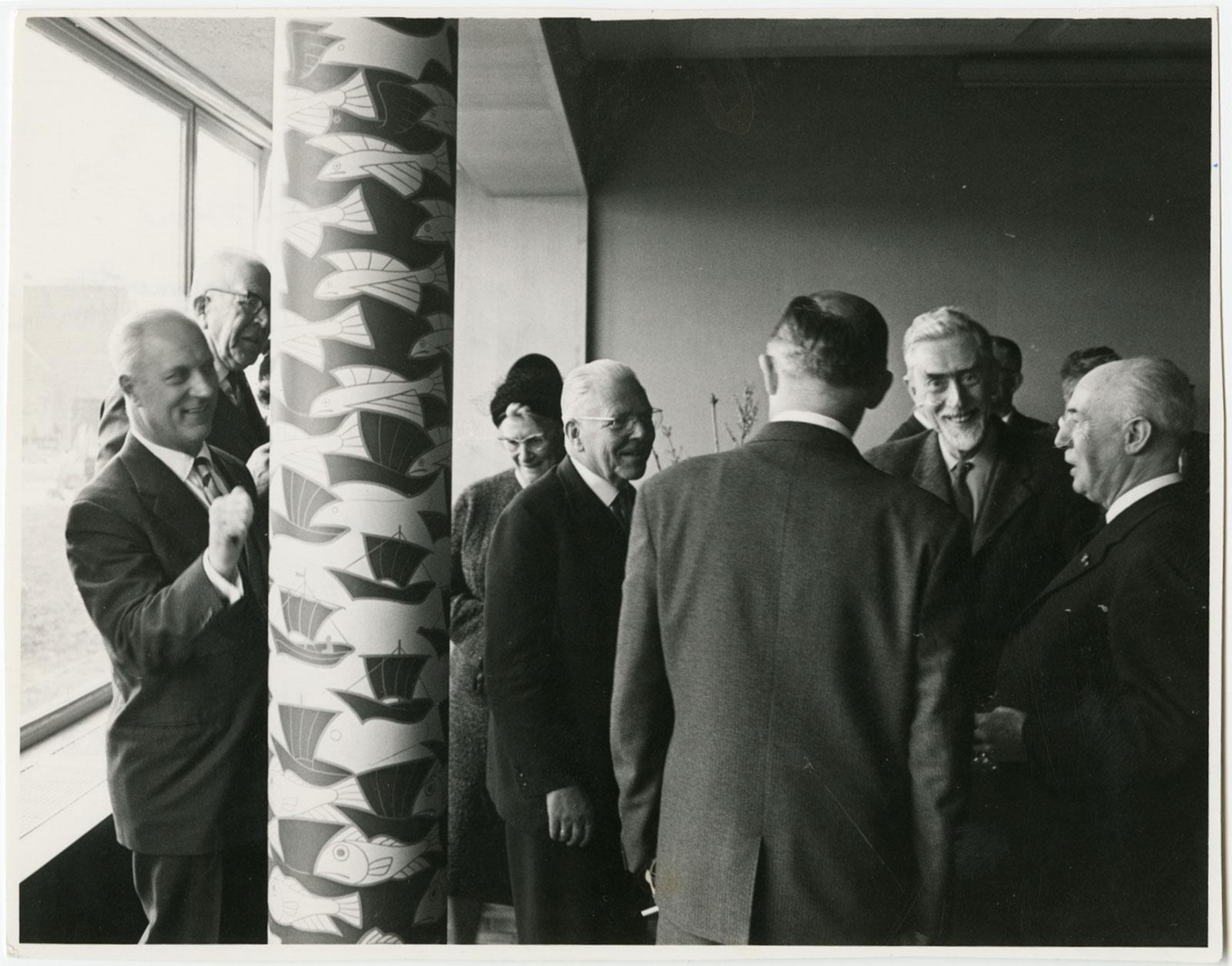
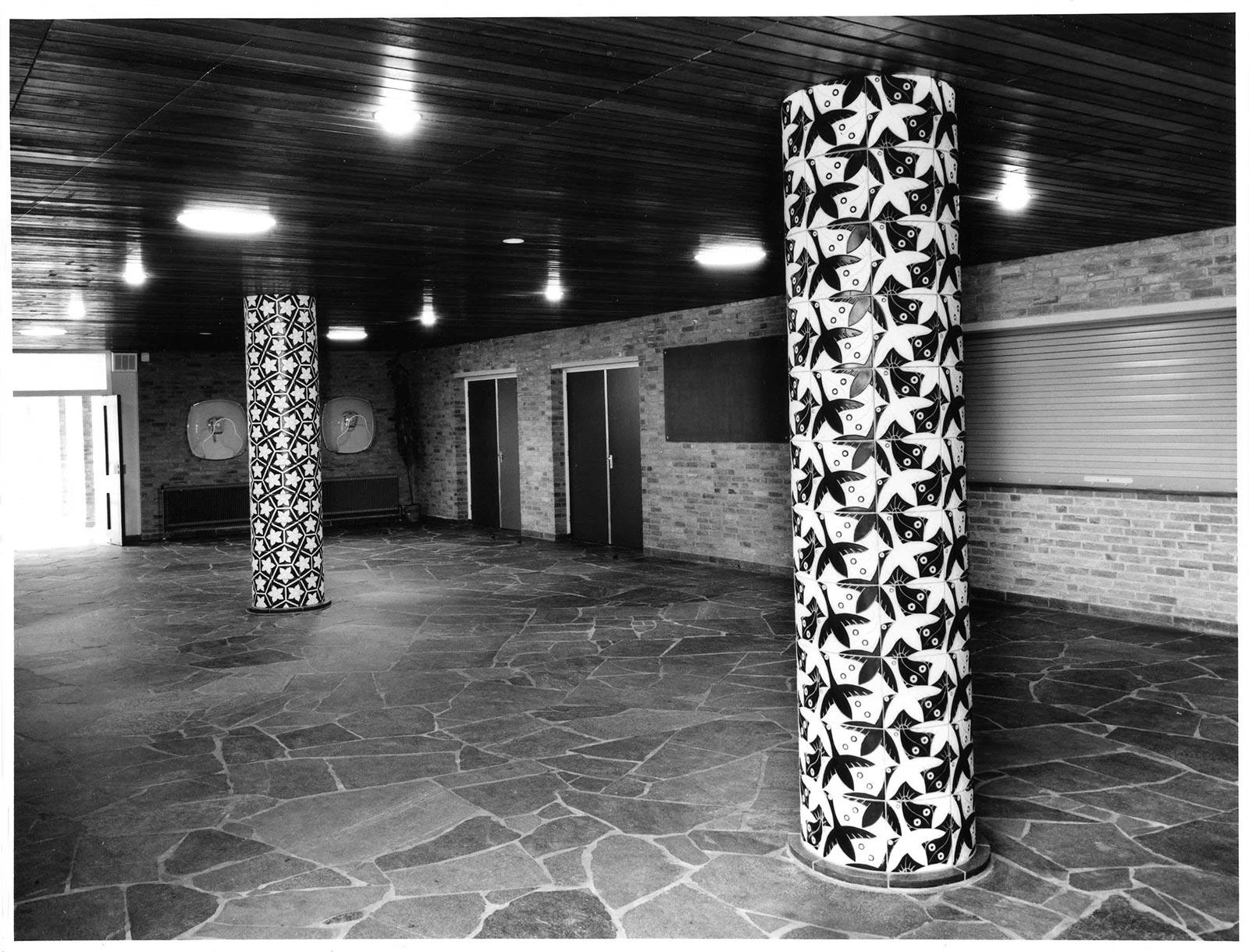
He later used the columnar shape in his designs for pillars, in two schools and for the building of the Provinciale Waterstaat (provincial water authority for public works and water management). But that was more of a pragmatic use, because it was a commissioned work. The concept of infinity was less pronounced here.
And so he persisted in his quest to at least suggest infinity on the flat surface. He realised that metamorphosis was not the right form to this end. The shapes from the division of the plane should not change into something else, but rather remain the same. They could change in size. After abandoning the topic for a while, he returned to it in the mid 1950s. Initially, he sought infinity on the flat surface by making the figures in the division of the plane ever smaller or bigger. Consider in this regard Division and Smaller and Smaller. But there too he ran up against the limits of the paper. It was only when he learned that circular tessellations can be made, in which the figures can become infinitely small as they get closer to the edge, that the real breakthrough followed. After some practice with Circle Limit I and Circle Limit II, the prints that Escher believed came closest to his ideal of limitlessness on a flat surface were Circle Limit III (1959) and Circle Limit IV (1960).
At the same time he also knew that these prints were only his own interpretation of laws to which mankind was always subordinate:***:
'I may rejoice and testify to this perfection with a clear conscience, because I did not "invent" or even discover it. Mathematical laws are not human inventions or creations; they “are”, they exist independently of the human mind. A person with a clear mind can at most discover that they are there and realise that fact. To cite a "tangible" example: Long before humans arose on our earth, the crystals were already dormant in the earth’s crust. One good day (good that day was indeed) a man saw such a glittering lump for the first time, or he hit it with his stone pickaxe and he picked it up and he looked at it in his open hand and wondered. It is the same with the intangible laws: they "are" there. It is up to us to realise it.'
Development II is a woodcut from 1939, but a print like Square Limit from 1964 shows that Escher was preoccupied with the illusion of infinity on paper until late in his life. In May 1971 he created Regular Division No. 137, his last tessellation which featured a 'ghost' that could repeat itself indefinitely. Less than a year before his death, the subject still gripped him.
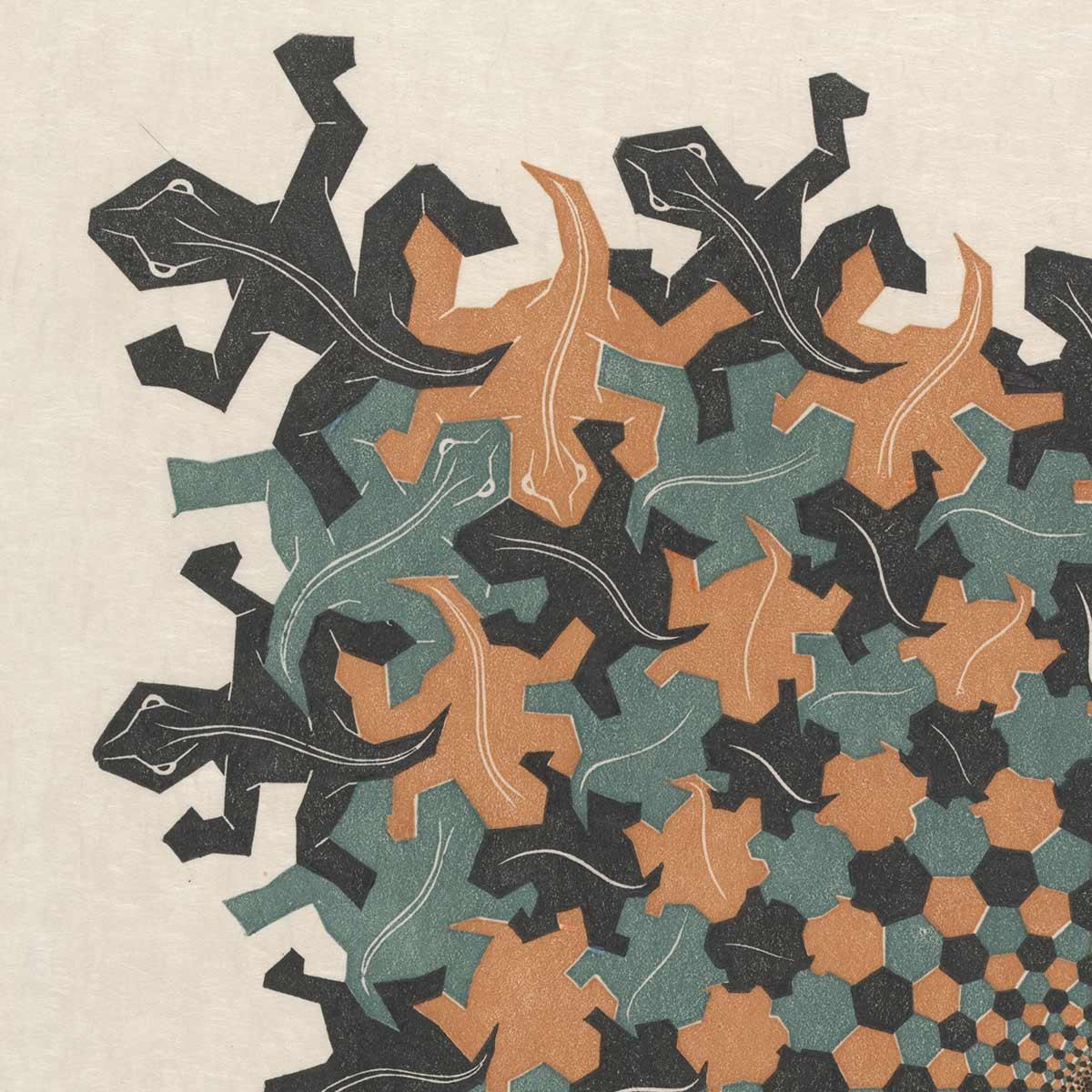
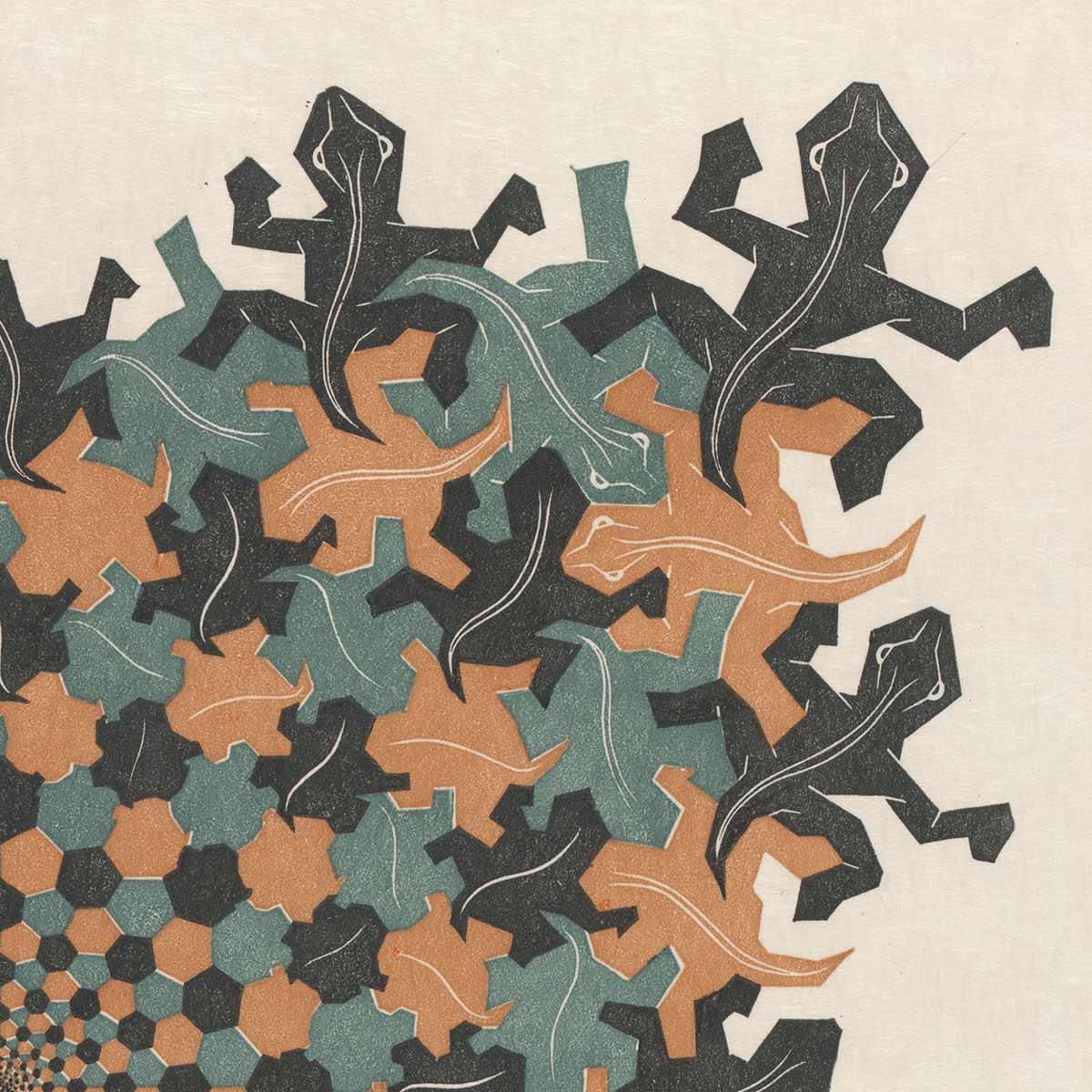
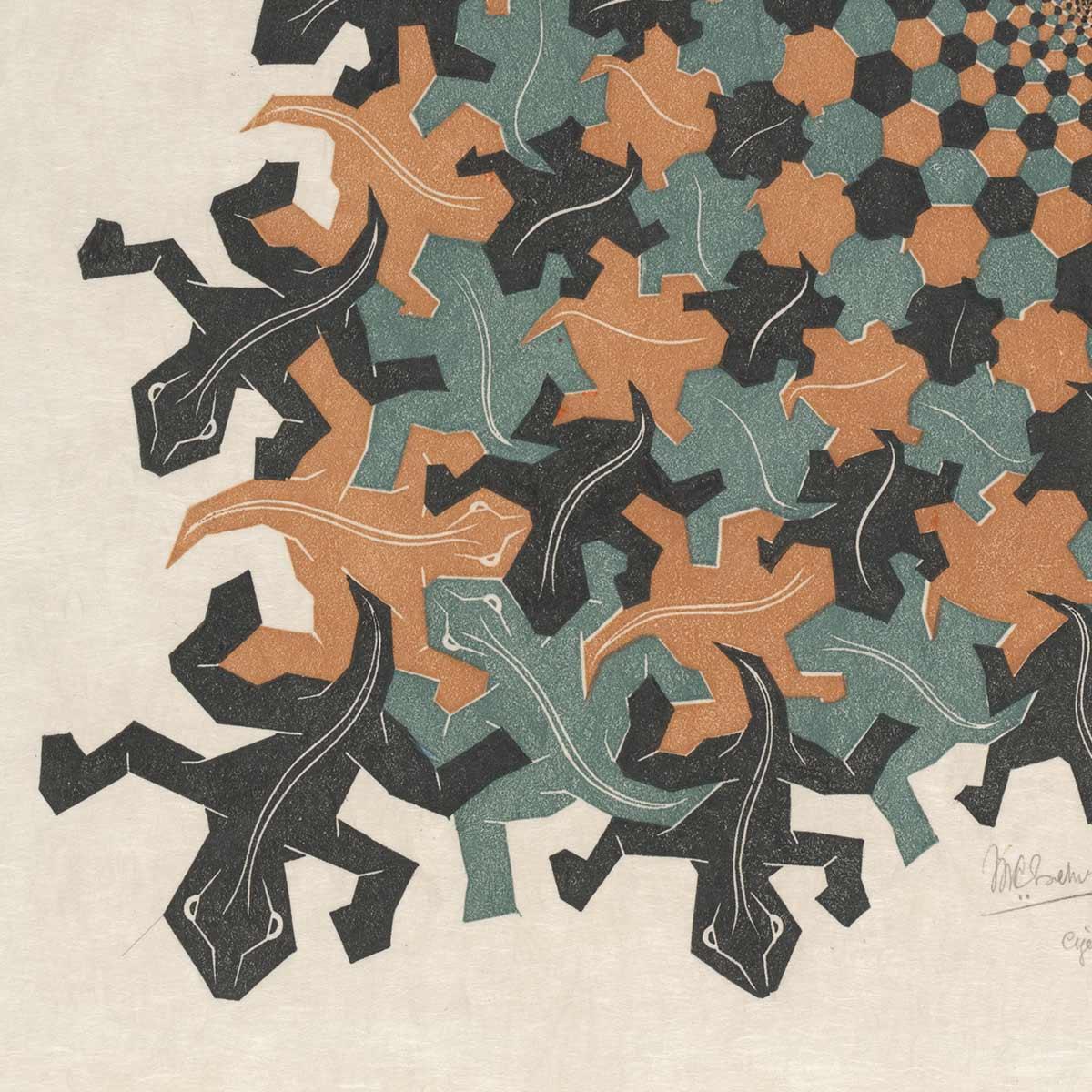
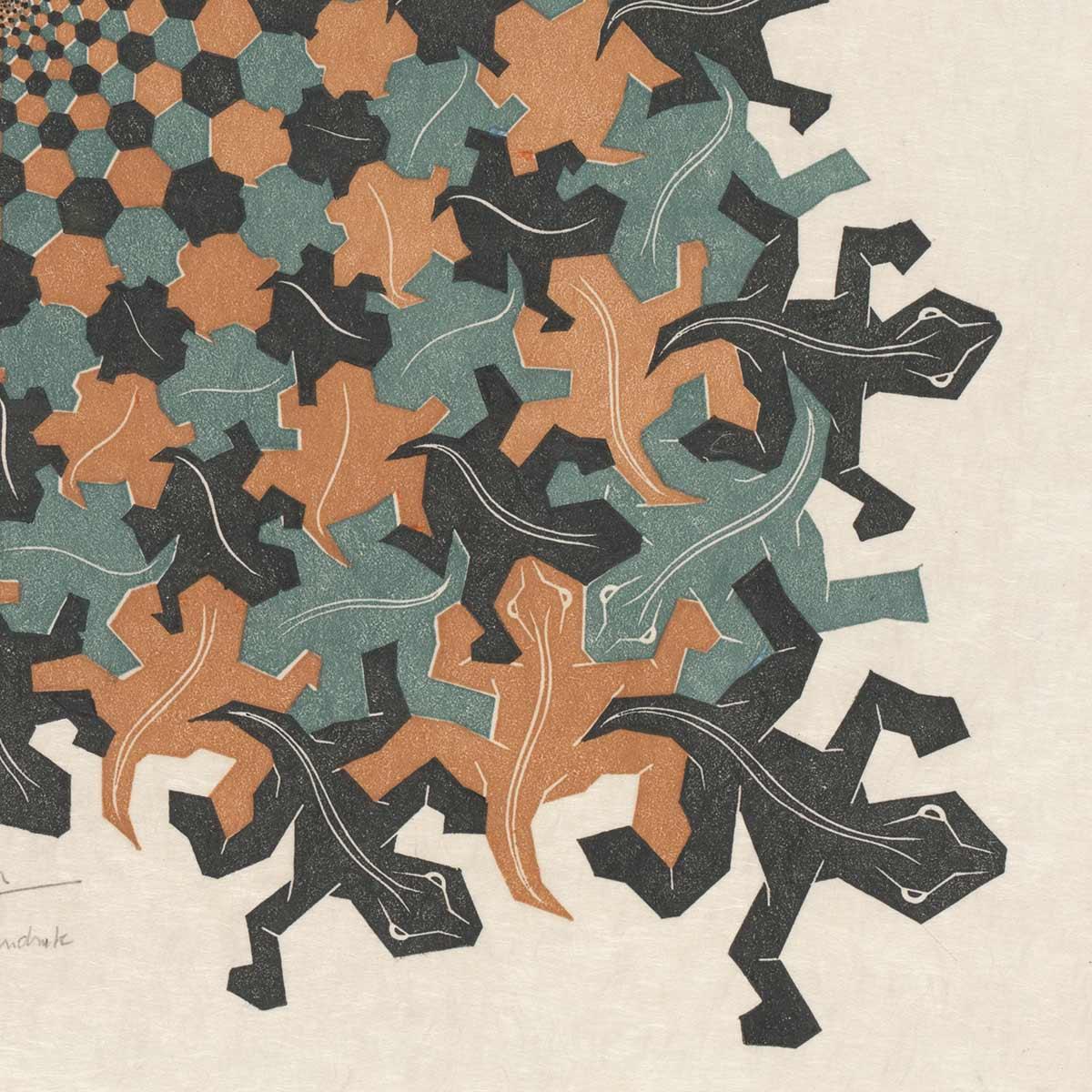
Source
[*] [**] and [***] Oneindigheidsbenaderingen (Infinity Approaches), in De Wereld van het Zwart en Wit (The World in Black and White), (ed. J. Hulsker) Amsterdam (1959)
More Escher today
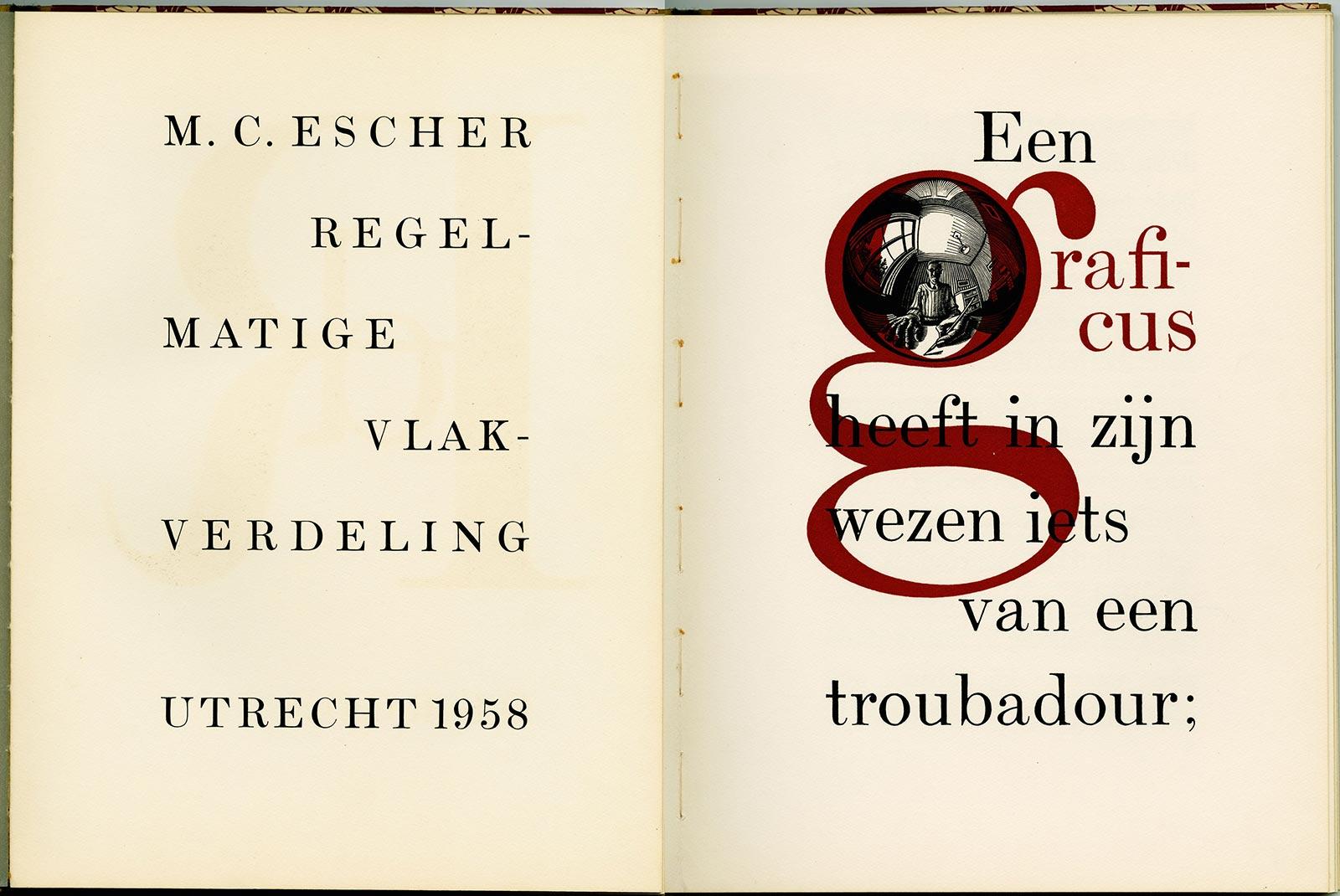
The Regular Division of The Plane at the ‘De Roos’ foundation
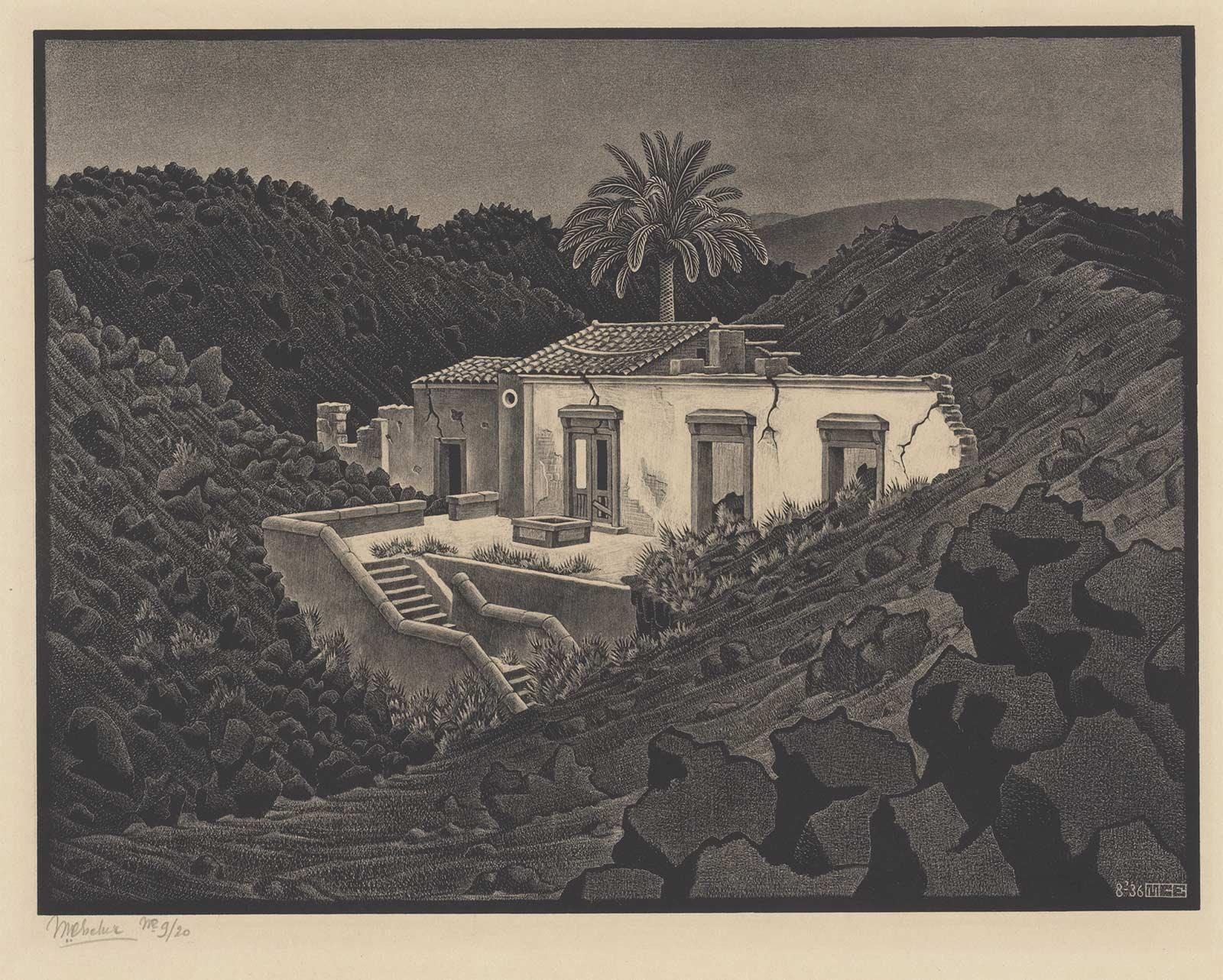
A house in the lava
Up early this morning to join the three Germans, the Stern family, on a trip to Giarre by train to see the same lava flow (from 1928) that I already saw and drew three years ago. There, I find a particularly typical subject: a house with a beautiful palm behind it, spared from the heavy lava destruction and completely surrounded by black lava.Escher wrote this in his travel diary on 4 May 1936, detailing his voyage on and around the Mediterranean. The house — the subject of a drawing and (in August) of a lithograph — had (almost) fallen prey to a powerful opponent: Mount Etna.

